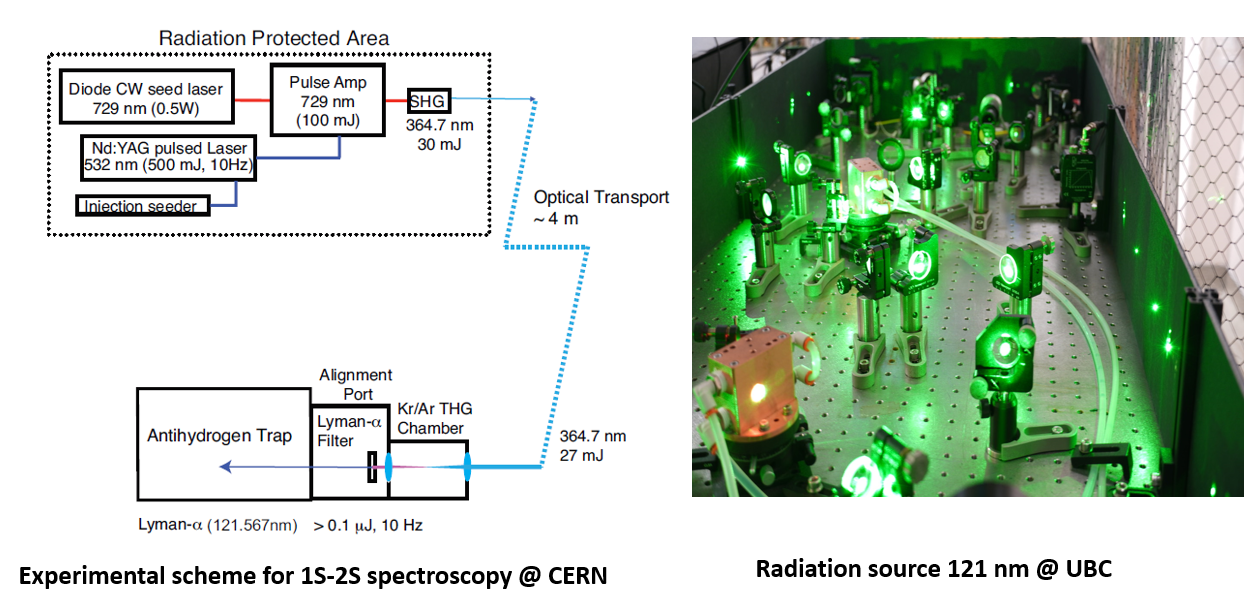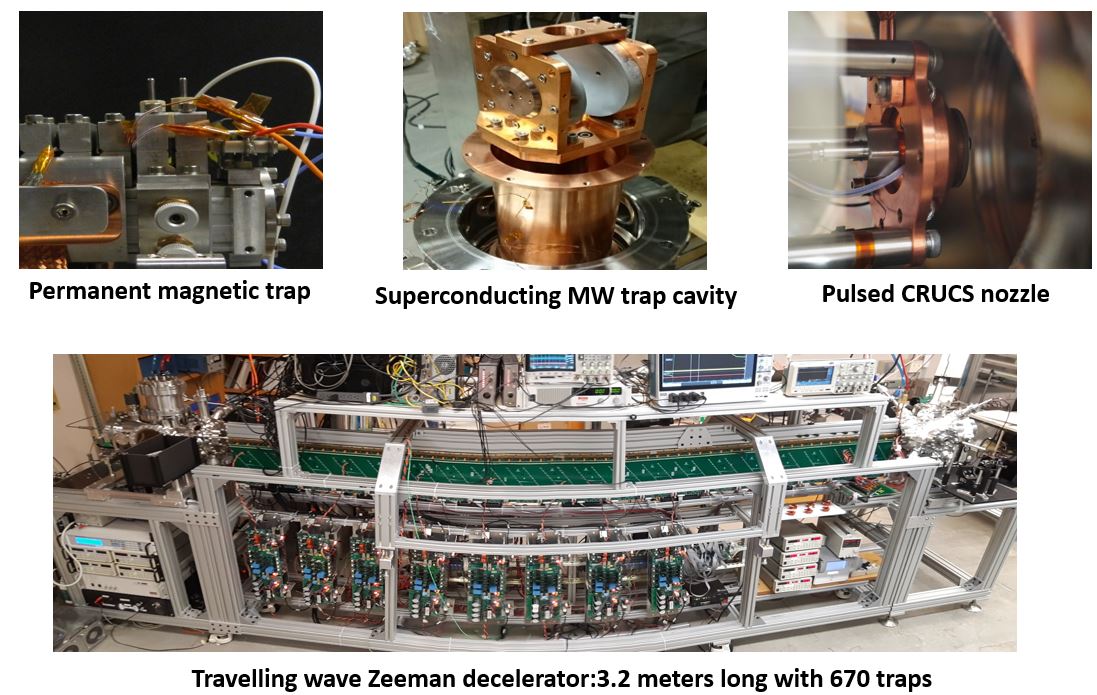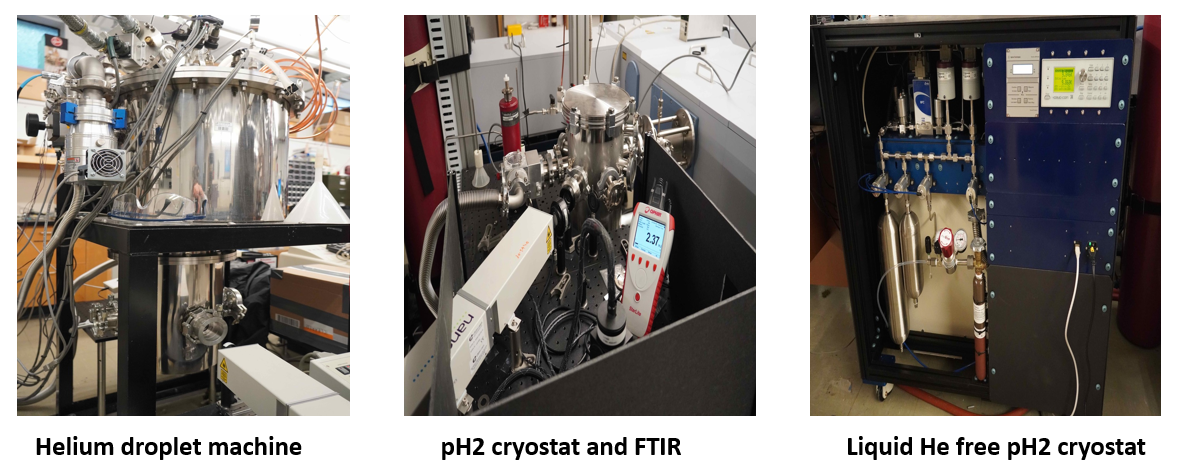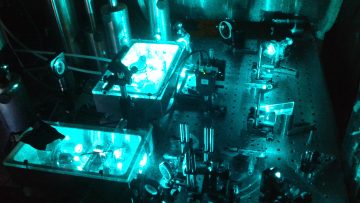Antihydrogen, an atom made of an anti-proton and an anti-electron (positron), is an antimatter counterpart of atomic hydrogen. The international collaboration ‘ALPHA’ at CERN has led the world in antimatter science by continuously improving their techniques for the creation and trapping of antihydrogen over the past decade. Momose’s group was invited to join the collaboration in 2012 to lead an ambitious program for the laser cooling of antihydrogen. One of the ultimate goals in antihydrogen research is to understand the matter-antimatter asymmetry in our Universe through ultra-high precision spectroscopy of antihydrogen, and to answer a great mystery in modern science; “What happened to antimatter after the Big Bang?” The ultimate precision for such studies is limited by the speed of antihydrogen; therefore it is essential to slow the anti-atoms to the lowest possible speeds. Though the technique of ‘laser cooling’ has revolutionized atomic physics over the past three decades, it has never been applied to antimatter atoms because of great technical difficulties − until now.
Over the last several years, the Momose group has led the laser cooling group in the ALPHA collaboration, which has developed a technically challenging 121 nm laser source, and performed the world’s first Lyman-alpha laser spectroscopy measurements (Refs). The first in this series of seminal experiments was reported in Nature in 2018 (Refs=). In this work, Momose and his team observed the Lyman-alpha transition, for the first time in antimatter. This was not only a prerequisite for laser cooling, but also a significant observation on its own. In a subsequent report, published in Nature in 2020 (Ref), Momose’s team measured the Lamb shift in antihydrogen. The discovery of the corresponding shift in normal hydrogen in 1947 by Wills Lamb led to the development of modern quantum theory (QED: Quantum Electrodynamics) that would later be awarded the Nobel Prize. The observation of the equivalent effect in antimatter by Momose’s team constitutes a historic milestone for antimatter science for the test of QED in antimatter. Visit the ALPHA webpage for more information.

Cold Molecules
If one could achieve trapping molecules in the gas phase at ultra-cold temperatures below 1 mK, it would be possible to control the number of molecules coherently, which would lead to a new methodology to manipulate molecules through quantum mechanics, in addition, to explore properties of very cold molecules. In this project, we are developing new techniques for making free cold molecules below 1 mK by combining techniques of Stark and Zeeman decelerators, mechanical cooling, velocity filters and optical cooling. Once cooling is achieved, the cold molecular ensembles will be used to investigate new phenomena such as anomalous reaction cross-sections at low temperatures, which offer a completely new field of research in physical chemistry.
See the cold molecules webpage for more information.


Solid Parahydrogen and Helium Nanodroplet Spectroscopy
Recently, we found that molecules in quantum condensed phases such as solid parahydrogen and superfluid He nanodroplets show completely quantized rotational energy levels, to which high-resolution spectroscopy can be applied. As a result, high-resolution spectroscopy of molecules in quantum condensed phases provides a powerful technique for detailed and precise investigation of their properties at the moderately low temperatures of 10 K – 0.1K. The research topics include investigation of intermolecular interactions, relaxation and decoherence processes, and chemical reaction dynamics at low temperatures – all of which are very difficult to obtain by other experimental techniques.
See the parahydrogen and HENDI webpage for more information.

TUCAN
The goal of this project is to develop laser- and lamp-based atomic vapour magnetometry based on the optical pumping of 199Hg and 129Xe isotopes. The result will be the development of an in-situ comagnetometer compatible with ultra-cold neutrons for a neutron electric dipole moment experiment at the TRIUMF Ultra Cold Advanced Neutron source (TUCAN). For more information visit: https://www.triumf.ca/ucn, and our TUCAN project page.
-

Optical pumping setup for Hg magnetometry tests.
Intense narrow UV laser light created by Second Harmonic Generation in optical cavities.
CHIROS
Background
There is a long-standing scientific mystery related to chiral molecules: Living cells are homochiral, i.e., they exclusively consist of left-handed amino acids. It is believed that homochirality is essential for long-lived systems, however, the origin of homochirality is still not known. Here, we study the energy difference between radical chiral enantiomers induced by weak interactions analytically and aim to shed light on the fundamental questions of science related to the origin of homochirality.
Parity violation in Weak Interactions:
The left- and right-handed chiral molecules have slightly different energies due to the parity-violating weak force, which may be related to the emergence of homochirality in the early universe.
Abdus Salam, J. Mol. Evol. 33:105-113, (1991).
The energy difference between two chiral enantiomers is predicted to be tiny (10-18 – 10-17 eV). In order to measure such a small energy change, the molecules will be cooled to an ultra-cold temperature such that there is no Doppler/transit broadening observed in the measured line shape. A chiral radical is predicted to provide enhanced energy separation between its enantiomer in comparison to a non-radical chiral molecule. Our future goal is to generate ultra-cold chiral radicals and perform precision spectroscopy on them.
Visit the CHIROS webpage for more information.